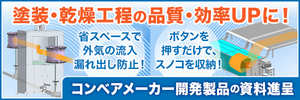1~22 item / All 22 items
Filter by category

Plant Engineering
The development of multi-component solvent recovery systems and their processes, utilizing various separation techniques such as evaporation, distillation, filtration, extraction, and absorption, is our area of expertise. Our design engineers, as well as the on-site construction workers, are thoroughly trained, allowing us to provide meticulous service through excellent teamwork from the planning stage of the plant to process design, construction, and after-sales service.


























